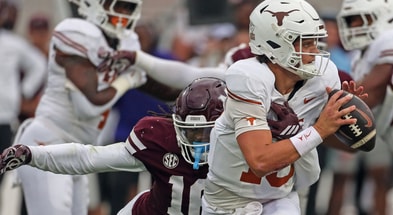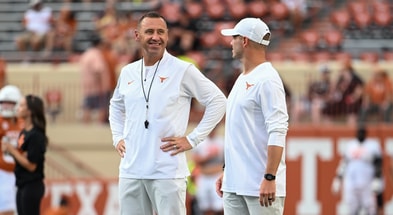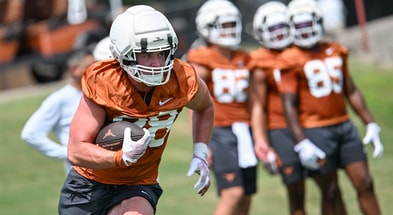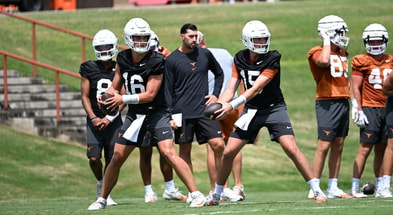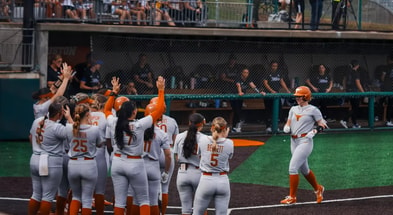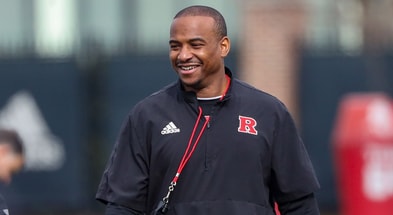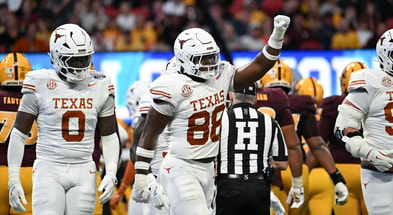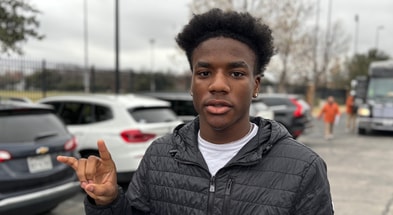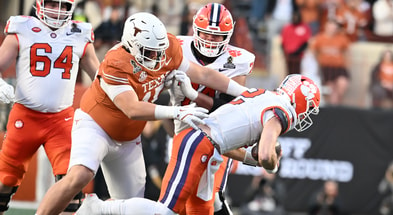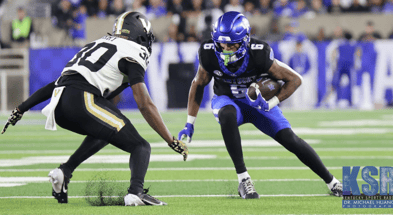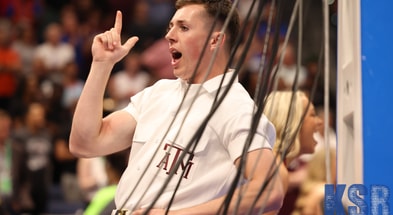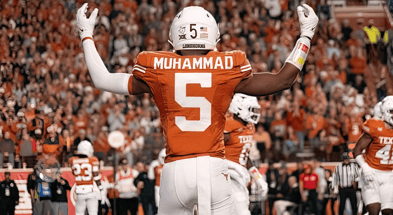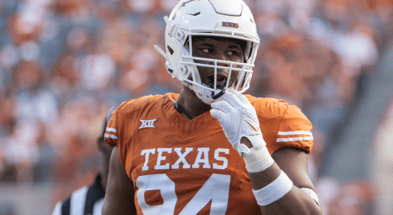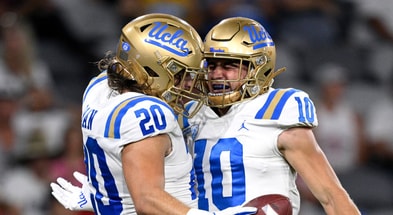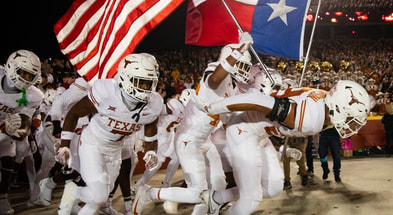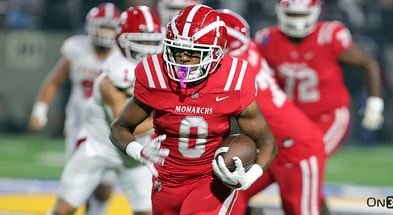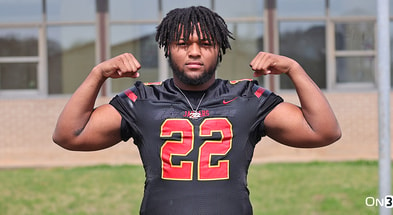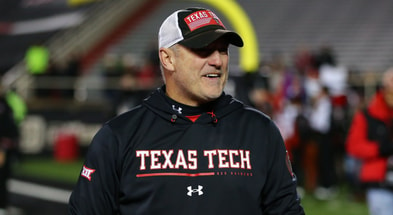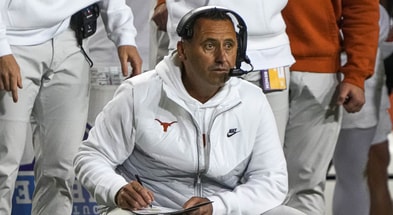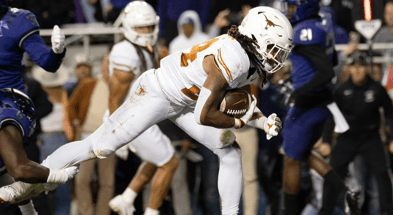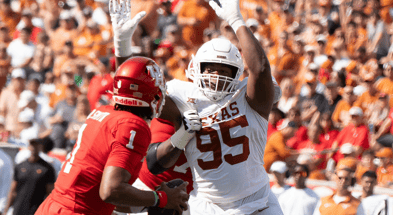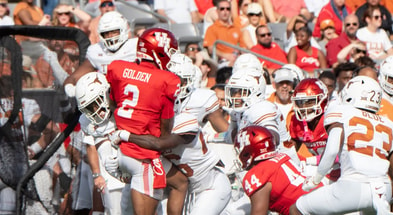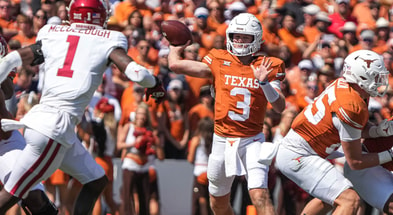2022 Big 12 contender or not? TCU
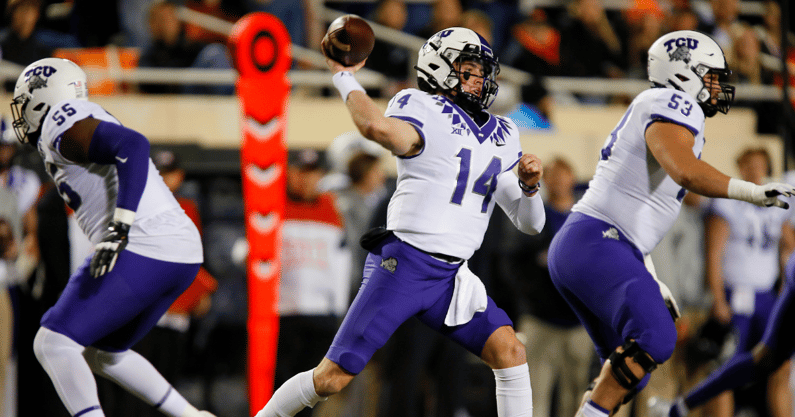
Probably not.
It’s pretty uncommon for first year head coaches instituting real regime change at a program to win big in their first year. Second year? That happens, but first year is tough. I think it’ll be a significant problem for Oklahoma next season and TCU is a less talented team than the Sooners.
Now, Sonny Dykes does have a different way of doing things. Heavy roster churn was a feature, not a bug, to his SMU teams. His offensive system is designed to use spacing and run/pass conflicts in the spread to help out the offensive line and set up quarterbacks and receivers to hit big, sooner than later. He’ll have to build out the TCU offense for it some but he’s inheriting a lot of good tools we’ll get to.
Defensively, it’s tougher.
TCU built their program under Gary Patterson around defense and that unit slipped hard in 2021, leading to the change and installation of Dykes. Then Dykes hired Joe Gillespie from Tulsa to install Iowa State’s flyover defense in Fort Worth.
Well, if you’ve studied that system you know it’s substantially different from Patterson’s 4-2-5. TCU’s players are going to study it and many will likely come to a similar conclusion. They’ve already lost Earl Barquet (defensive tackle), Ochaun Mathis (defensive end), and Patrick Jenkins (defensive tackle). You have to wonder if Dylan Horton and (particularly) Khari Coleman are next given their forced fit within a 3-down defense.
These coaches taking over in Fort Worth are good and their plan for retooling the roster is a good one, but in 2022? It’s a less positive outlook.
Roster infrastructure
Offensively things look better here than you’d think given how TCU has played on offense for the last few years.
The 2022 team had two extremely different identities they called upon at different points in the season. Their first identity, the one preferred by Patterson, was as a spread-option team mixing zone/power-option schemes from spread sets with the two-headed run game duo of quarterback Max Duggan and running back Zach Evans.
The second identity, which powered their upset win over Baylor, was more of a pure Air Raid attack involving Chandler Morris throwing the ball around to Quentin Johnston. The latter identity had more potency but wasn’t really the focal point of the program and wasn’t fleshed out well enough to propel them all season.
However, TCU dabbling with identity two and identity one will help them mesh the two under Dykes when they ditch the spread-option run game but continue to emphasize spread run game and then emphasize the passing game. Chandler Morris is a good fit for Dykes’ offense, Duggan less so given the major role of crossing routes and Duggan’s struggles to navigate defenders in the middle of the field.
The offensive line and new adjunct, tight end Jared Wiley from Texas, should also find the transition pretty manageable. Particularly with the addition of longtime SMU center Alan Ali who’s using his extra year of eligibility to help Dykes. They still have former center Esteban Avila, who’s a good player, and also guards John Lanz and Wes Harris. It’s a good bet TCU will have a strong run game in 2022.
Defense is another matter.
Gary Patterson wasn’t stockpiling mammoth people to eat blocks in a 3-down defense and his biggest, strongest end Ochaun Mathis is transferring out (probably to Texas) rather than looking to mimic JaQuan Bailey or Will McDonald in the new defense.
Then there’s nose tackle, where you need someone who’s either eating space or otherwise cancelling out A-gaps. For the last two years TCU has been getting wrecked at defensive tackle.
The new staff has been throwing offers out to big people to come help them try to hold the point of attack in a 3-down front but this is where they could potentially have a slow learning curve.
Linebacker and safety is a more promising story in terms of athletic fits, but there could be issues in terms of play style and system mastery. At linebacker they have Dee Winters, Shadrach Banks, Jamoi Hodge, Wyatt Harris, and potentially former 5-star Marcel Brooks and star Edge Khari Coleman. They don’t really have any traditional 3-3 stack linebackers and will have to develop some from guys like Harris, Hodge, or Banks who have some size to them. As for outside linebackers who can play on the edge some? That part could go well depending on how Brooks and Coleman take to the new system.
There are holes at safety too, where a number of guys are clearing out and the new staff is bringing in multiple transfers. There’s a fair amount of overlap between the Iowa State flyover scheme and TCU’s quarters coverages under Patterson, the Cyclone defense was birthed from the ashes of 4-down quarters scheme. It’s not like an established, All-Big 12 Derrick Kindred is waiting around though for the new staff. They’ll have to teach the athletic young safeties Patterson left behind how to play the way they want.
Space force
There’s a mixed prognosis here. Defensively, the Frogs have some guys on the edge and perimeter with some real promise.
Tre’Vius Hodges-Tomlinson is back, although he’s not really an island cornerback and took more Ls in year two than he had in year one as a starter. He’s a good player and the new staff will surely be glad to have him, although their preference is evidently for bigger cornerbacks. Elsewhere at cornerback they’re solid, not great.
Top 10
- 1New
NCAA betting policy
D1 Board makes change to decision
- 2
UF Coaching Search
Contingency plans being vetted
- 3
National Title Odds
Big shakeup after Week 9
- 4
LSU Coaching Search
Names to know, timelines to watch
- 5Hot
BCS Formula
Predicts CFP Top 25
Get the Daily On3 Newsletter in your inbox every morning
By clicking "Subscribe to Newsletter", I agree to On3's Privacy Notice, Terms, and use of my personal information described therein.
The Edge up front is going to be an interesting challenge. They structured their fronts at Tulsa a lot like Iowa State, often using “back” fronts with the defensive end opposite the running back in a 5-technique so he could set the edge while the end across from the back would line up in a 4i-tehnique.
The challenge for all these 3-down, flyover teams is finding ends who can credibly rush the passer from the edge but also has the strength and technique to play inside and plug B-gaps. JaQuan Bailey was solid at it, James Lynch and James Lockhart did it at a masterful level for Baylor in 2019, Will McDonald (fourth of that name) isn’t always great in the run game part of it for Iowa State today but he’s such a plus pass-rusher it hardly matters. Also, they’ll sub in Zach Petersen or another big dude when they need to get big against the run.
TCU doesn’t really have anyone like this on the roster. Ochaun Mathis was the closest, although while he can play with strength at the point of attack he generally prefers to sidesteps blockers, but he’s leaving. Dylan Horton has some size but was often run over in 2021. Khari Coleman is 225 pounds and completely unsuitable for playing as a 3-down end.
On offense, it’s also mixed. Outside at receiver they have Quentin Johnston back, who’s one of the best deep threat targets in the whole league if someone would but throw him the football. Dykes should get a lot out of him in 2022 and will surely set him up to run down the field regularly.
Protecting the quarterback while they do so is a little trickier. Obinna Eze was solid for them in 2021, although their overall protections were pretty shaky and you wonder the extent to which they worked on them in practice. He’s gone now, heading off to the NFL, and I’m not sure who replaces him.
The other tackles for TCU have been pretty weak in protection so there’s no obvious heir. This could be a substantial problem and is the most glaring weakness for the Frogs next season. Wiley is a shaky fix here as well, he did a lot of work in pass protection for Texas last season but he doesn’t move backwards well at all and when he was isolated it would go very poorly. He’ll be a boost to the offense but not in making up for a lack of athleticism at tackle in pass protection.
Can TCU contend in 2022?
The major shift in schematic approach, particularly on defense, is going to be a tough mountain for TCU to climb. Dykes is going to be active in the transfer portal to solve for this problem, but the portal is much better for plugging in holes on offense than in rebuilding a defense.
The very nature of offense is a hierarchical “stack up role players and then plug in star players to benefit from their labor.” You can be mercenary in adding a receiver, running back, or even quarterback to run the show so long as they have enough time to master the system and your system is conducive to plugging in different players. Dykes has shown he can navigate all those issues and develop offensive linemen who will set the floor.
Defense is different, it takes sacrifice and team buy-in from everyone to play good defense. Plugging in mercenaries who came in search of more playing time or a better role is more difficult. It’s not like offense where you very well may be looking for a new star athlete to feature, instead you’re looking for a guy who will eat a block, stay assignment sound, and buy into a team concept.
Can you build a defense with the portal? Maybe to some extent, like adding a pass-rusher or a top cornerback, but probably not to the same extent you can on offense. As it happens, while they were aggressive in the portal at SMU on defense, they didn’t have the same kind of returns.
I think they’ll be interesting and probably a winning team but ultimately at least a year away from really contending for the league. The offense will struggle to hum like they will eventually in their first try and defense I expect to be a journey.
Can TCU contend for a Big 12 title in year one under Sonny Dykes? Discuss for free on the Flyover Football board!
